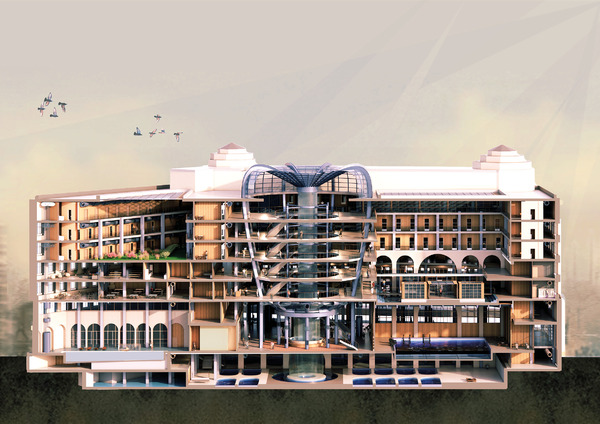Adaptive Reuse and Urban Regeneration: Transforming Historic Industrial Buildings into Mixed-Use Spaces
My thesis project focuses on transforming the vacant Debenhams building in Piccadilly Gardens into a mixed-use communal bathhouse and washhouse. This innovative design aims to facilitate social integration among diverse social groups, including the homeless population. By incorporating an innovative laundry system as a transitional platform, the project highlights the potential of architectural interventions to address homelessness and foster community engagement.
Recognizing that architecture alone cannot resolve social issues, this study underscores the responsibility of architects to enhance societal well-being and dignity. The project's central goal is to create a dynamic public cultural hub that provides essential amenities and promotes social cohesion. Through the adaptive reuse of the Debenhams building, the project exemplifies how thoughtful design can advance human rights and social inclusion. By repurposing this underutilized urban structure, I aim to preserve historical and cultural heritage while meeting contemporary needs.
Key areas of interest in this project include:
Adaptive Reuse: Transforming existing structures to serve new purposes, thereby conserving resources and preserving historical significance.Sustainable Design: Integrating energy-efficient systems and green technologies to ensure environmental responsibility and economic viability.Social Services Integration: Combining architectural design with social services to address the needs of marginalized populations, particularly the homeless.Community Engagement: Creating spaces that foster social interaction, inclusivity, and a sense of community. This involves designing accessible and welcoming environments that encourage community participation.
Ultimately, the project seeks to demonstrate how architecture can be a powerful tool for driving positive change and enhancing the resilience of urban communities. By providing a model for inclusive and sustainable urban development, the project contributes to the creation of more equitable and vibrant environments.


